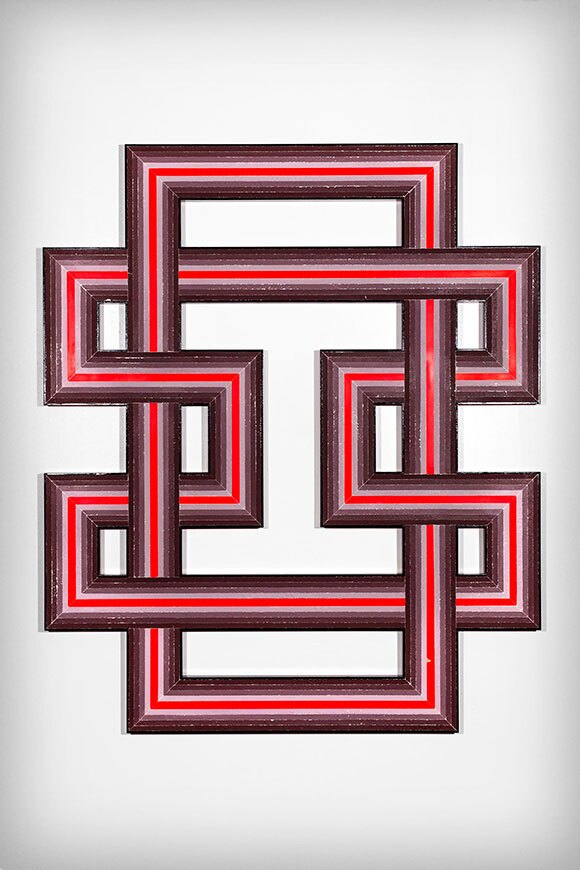Epic Journey: The Evolution of REVOK
Joseph Campbell coined the term monomyth, a so-called "heroic journey" that charts a mythological expedition, outlining a fabled champion's call to leave the common world and enter the unknown. During this voyage, the subject encounters obstacles and challenge, which the hero eventually overcomes. Afterward, he is transformed and returns to his place of origin as a different person, who has learned from his challenges. Artist Jason Williams, aka REVOK, is a trailblazer in the sub-culture of graffiti, who has ventured on his own tumultuous journey. In 2011, he was featured in the critically acclaimed "Art in the Streets" exhibit at the Museum of Contemporary Art, Los Angeles. Shortly after, the artist was arrested at LAX as he attempted to flee to Ireland. What followed was a number of financial, legal, and personal struggles that culminated with the artist withdrawing to Detroit for two years. Since returning, his first exhibition in Los Angeles opened on April 10, and it depicts a much different and changed artist.
A host of legal troubles followed Williams' initial arrest in 2009, when the artist was on his way to the Coachella Music Festival. This was followed the same year by another arrest in Australia, where he was detained at the airport in front of a news crew. However, after a few years of relative peace, Williams underwent what many consider the most high profile and scrutinized arrest in graffiti history, when he was seized at LAX in 2011, and held on $320,000 bail for failing to pay restitution and past graffiti crimes. Sentenced to 180 days in prison, the response from the community included "Free Revok" signs and outrage considering the local museum with simultaneously celebrating the work of the artist.

Serving 44 days and paying close to $24,000 in fines, Williams was eventually released. Frustrated by the results, he can no longer paint murals in Los Angeles regardless if they are commissioned or endorsed.
"I had a dramatically different life in Detroit," Williams says about his move, "and I am reacting aesthetically to the environment [in L.A.]."
Since returning to California recently, Williams says he secured a studio outside the city and still maintains his recluse mentality. Reworking his process by manufacturing his primary materials, his works are no longer about recycling the past but instead, representing a new future.
Imagine the color studies of Josef Albers combined with hard edge painting underpinned by a lust for texture. The result is a very cool and attractive set of mixed media works that moves Williams into an arena where he says is like starting from the bottom. In this approach, Williams' mimics the faux façade of Los Angeles. The aesthetic of the final images look a bit like digital renderings with the imperfections found in handcrafted work, a conversation that could be pushed further if this element becomes a focal point for the artist.
At its heart, graffiti is about writing one's name over and over. Although Williams elevated this art to higher levels, it's a process the artist says that involved a lot of rage and insecurity. The move to Detroit represented a fresh start and the abundance of abandoned buildings and state of disrepair in the city of Detroit is a writer's dream, much like a blank canvas. "Part of the reason for moving is because I wanted to isolate myself and focus on being productive," he says. Going days and weeks without seeing any friends, Williams says he reveled in the time away from distractions and focused on making a new body of work. It was the idea of a reawakening and the potential recovered within the streets of Detroit that Williams found interesting and that fueled his desire for art making.


Utilizing remnants of painted wood obtained in the city, the artist began to cut them into small geometric forms that could be pieced together in abstract compositions. The work displays maturity with materials and a love of handicraft. Evidence of the process, through punctures and cuts, functions as a metaphor for this process of working with his hands and the rehabilitation of these repurposed pieces of scrap. The imperfections of peeling paint, bumps, and bubbles are nods to the past yet also preserved for their beauty as the new formations provide illusions of depth, space, and motion depending upon the arrangement.
Founding the Detroit Beautification Project, Williams also worked to facilitate murals around the city. The abundance of visiting artists and new public art works signaled the artist firing on all cylinders. Williams' says his life could not have been more different than his past in Los Angeles. Yet he, explains that it was the birth of his first child that pulled him from this urban sanctuary and his wife's wishes to move back home to be closer to family because "it's a good support system especially for watching our daughter."
The journey of REVOK from L.A. to Detroit and back again has birthed a sensitive and reflective abstractionist. It's a new realm and area to prove himself and the beginning of a fresh start for Williams. By dissecting evidence of his past life and reimagining possibilities, his current body of work is brutally honest. Williams' history as a graffiti artist involved writing his name many times over but ironically, this series is autobiographical in its abstractions. "This work is much more personal," Williams says, about the reflective nature of his new works. Admitting his past faults and successes, they are both displayed side by side, in an admirable and stylistic strong manner to highlight the vibrancy of a life making flat surfaces come to life.

Dig this story? Sign up for our newsletter to get unique arts & culture stories and videos from across Southern California in your inbox. Also, follow Artbound on Facebook, Twitter, and Youtube.